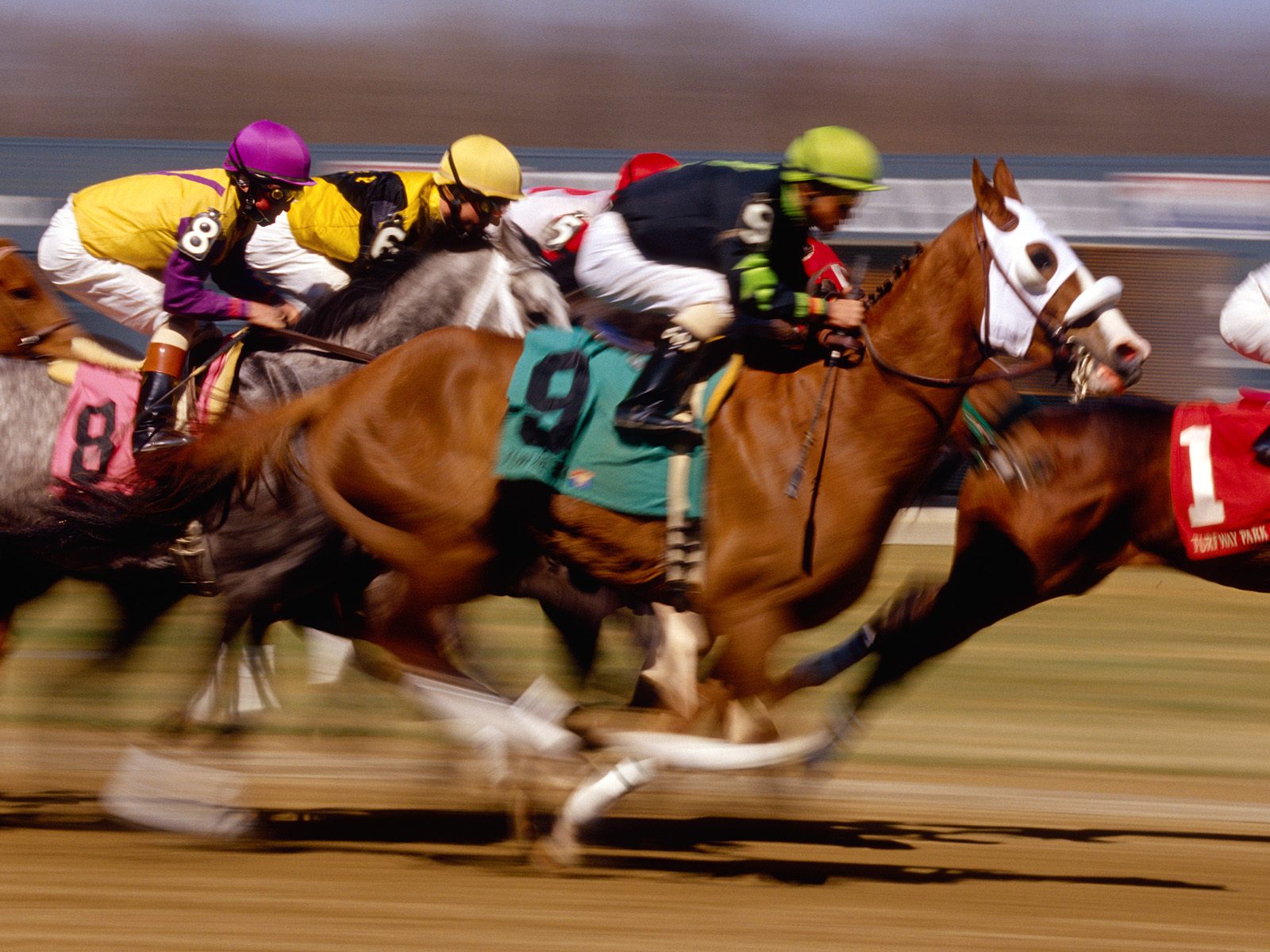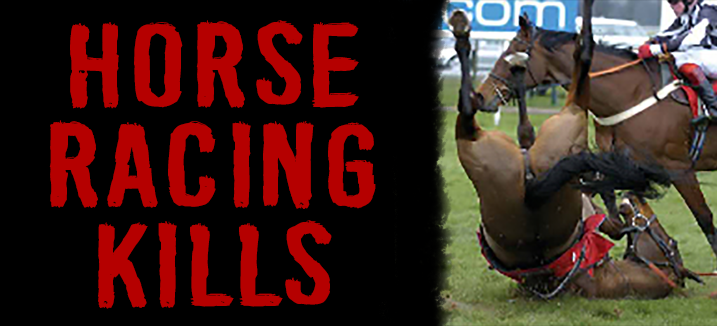Breeding
The horse racing industry began in North America in 1665. Commonly referred to as the 'sport of kings,' horses bred for speed and endurance have become victims of human greed for hundreds of years. Racing as young as two-years-old, they are not even fully grown before they are thrown into a world of high stakes, physical and psychological stress only to be discarded when they are unable to achieve the expectations of owners and trainers.
Drugs
Horses are often made dependent on the drugs that their veterinarians and trainers provide. Often administered by unqualified horsepersons, the drugs can cause serious reactions when not given as prescribed. While the drugs may relieve symptoms such as exercise-induced pulmonary hemorrhage (EIPH) and pain, they do not treat the underlying problems. EIPH is frequently seen in young horses and is a serious, life-threatening illness. Lameness is often treated with pain killers and horses are forced to continue running with injuries temporarily numbed, causing further damage to their legs. Legal drugs are also used to mask the presence of illegal drugs administered to the horse.
 Frequently Administered Drugs
Frequently Administered Drugs
- Furosemide (Lasix)
- Bute Phenylbutazone (Bute)
- Steroids
Injuries
Horses are frequently made to race at the age of two. Since their bones have not fully developed at that point, injuries are common. In addition, many are raced so often that their joints, bones, and soft tissues suffer irreparable damage. The intense stress that these horses endure from the time they are weaned is nothing short of inhumane. From being separated from their dams at six months, broken at the age of 18 months, and experiencing the noises, lights, and daily running at the tracks by the time they're two-years-old — their suffering is not only physical.
Common Injuries
- Exercise-induced pulmonary hemorrhage; i.e., blood in the horse’s lungs, causing them to literally drown from their own blood
- Lameness (this includes sprains, abscesses, strains, etc.)
- Bowed tendons
- Shin splints
- Fractures
Transportation to Slaughter
Horses are sometimes placed in double-decker trucks that are too low for them to even stand up straight in. They are not given food or water or even allowed to stop and rest. “Owners” do not want to spend money on painkillers, so animals with a broken leg or other injuries must suffer the entire trip without any relief. Since horses must be alive when they arrive at the slaughterhouse in order to be used for human consumption, even animals in excruciating pain will not be euthanized. When unloaded from the trucks, it is not uncommon to see injuries occur, such as broken legs, as they try to descend the steep ramps not meant for horses.
Regulations
Horseracing is effectively excluded from all anti-cruelty laws. Individual states are supposed to regulate the industry through their own racing commissions. Since the racing commission is a state agency, state prosecutors are disinclined toward pursuing cruelty cases against it. Moreover, because each state receives revenue from its tracks, states are unlikely to hold industry insiders to very strict standards.
After Racing, Horses Are Often:
- Killed for human consumption overseas, at Quebec grocers, and to select Canadian and U.S. restaurants
- Made into dog food
- Used to produce glue
- Turned into breeding stock until the day they die
- Murdered by their “owners” who then file fraudulent insurance claims.
How You Can Help:
- Do not patronize racetracks
- Distribute anti-horseracing information outside of racetracks
- Lobby against the construction of new racetracks
- Educate others about the cruelty involved in horseracing
![]() Learn more about: Horses - Premarin
Learn more about: Horses - Premarin
